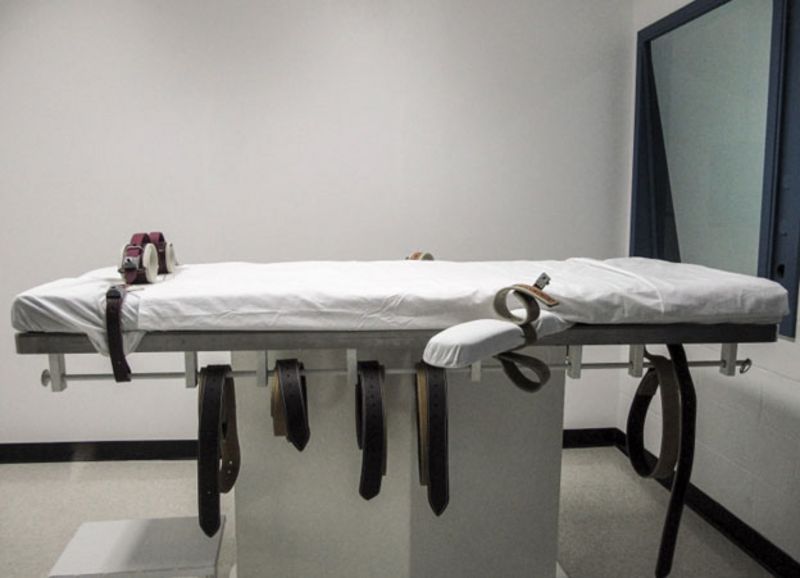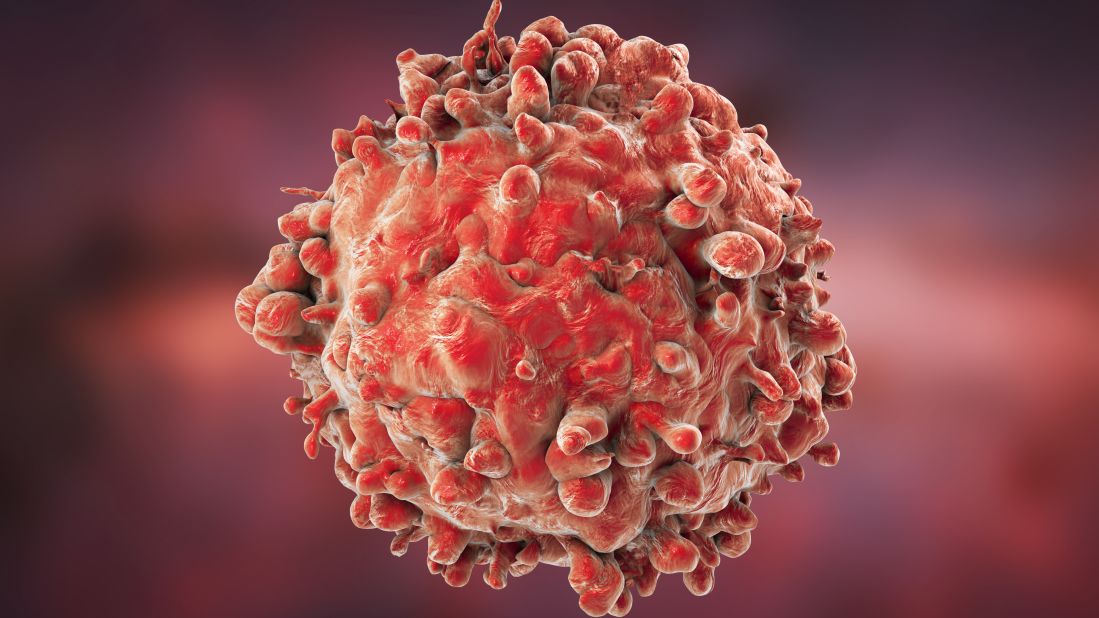For many people, the very idea of leukemia brings with it a wave of fear, a chilling thought of a hopeless situation. It's an image, very often, of a dire diagnosis, a life cut short, and a battle that cannot be won. You know, just hearing that word, "leukemia," can feel incredibly frightening. This perception, so it seems, has lingered for quite some time, like a shadow over the whole discussion of blood cancers. But, as a matter of fact, medical science has moved forward in truly remarkable ways, changing what a leukemia diagnosis means for many people today.
It's a really important question to ask: Is leukemia still a death sentence? This query, so often on the minds of those who have just received a diagnosis, or perhaps their loved ones, speaks to a deeply held concern. The good news, you see, is that the answer has become much more nuanced, much more hopeful than it once was. We're living in a time when understanding these conditions has grown by leaps and bounds, offering paths that were simply not there before.
This article aims to shed some light on the current landscape of leukemia, helping you grasp the realities of diagnosis and treatment in our modern world. We will explore what leukemia is, the different kinds, and how much things have changed for people facing this illness. It's really about getting the right information, so you can feel more in control and less afraid.
Table of Contents
- Understanding What Leukemia Is
- Many Types of Leukemia Exist
- Modern Treatment Approaches: A Shifting Outlook
- Empowering Yourself with Knowledge and Questions
- Frequently Asked Questions
Understanding What Leukemia Is
To really understand if leukemia is still a death sentence, we first need to get a better grasp of what it actually is. Basically, leukemia is a cancer that affects the blood and the bone marrow. The bone marrow, you know, is that soft material found inside our bones, and it's where all our blood cells are made. It's a very busy place, constantly producing new cells to keep us healthy.
How It Starts: The Cells and DNA
Leukemia, so it's thought, begins when some blood cells get changes, or what we call mutations, in their DNA. This DNA, you see, is like the instruction manual for the cell. When these changes happen, they tell the blood cells to just keep growing and dividing, rather than stopping when they should. This is a bit like a car engine that just keeps running, even when you've taken your foot off the gas. These abnormal cells, therefore, don't mature properly and they don't do the jobs healthy blood cells are supposed to do.
Impact on the Body: Crowding Out Healthy Cells
Over time, these abnormal cells can crowd out healthy blood cells in the bone marrow. This crowding, you see, leads to fewer healthy white blood cells, which fight infection, fewer red blood cells, which carry oxygen, and fewer platelets, which help blood clot. When these healthy cells are pushed aside, it can cause a whole host of problems in the body. It means the body struggles to fight off sickness, feels very tired, and might bleed or bruise easily. This is why getting a diagnosis can be so scary, as these symptoms can really affect how a person feels day to day.
Many Types of Leukemia Exist
It's important to remember that leukemia isn't just one illness; there are many types, and each one can behave a little differently. This is why the question, "Is leukemia still a death sentence?" doesn't have a simple yes or no answer for everyone. The kind of leukemia a person has, and how quickly it progresses, makes a big difference in the outlook. For instance, some types can move very quickly, while others might develop quite slowly, you know?
Chronic Lymphocytic Leukemia (CLL)
Chronic lymphocytic leukemia, also called CLL, is one type of cancer that affects the blood and bone marrow. This kind of leukemia, it's generally slow to develop. In fact, it's not uncommon for treatment to be delayed, sometimes for years, because it might not be causing problems right away. Though the average age of diagnosis is around 70 years old, CLL can affect younger people too, so it's not just an older person's condition. If you've recently been diagnosed with CLL or small lymphocytic lymphoma (SLL), you may feel scared, angry, or even powerless, and that's a very natural reaction.
Acute Myelogenous Leukemia (AML)
On the other hand, there's acute myelogenous leukemia, also called AML. This is a cancer of the blood and bone marrow that tends to progress much more quickly than CLL. The word "acute" here means it can develop suddenly and needs quick attention. Because it moves fast, understanding AML and getting a plan in place quickly is very important for those who have it. It's a different kind of challenge, you know, requiring a different approach.
Modern Treatment Approaches: A Shifting Outlook
The biggest reason why the idea of leukemia as an automatic death sentence is changing is because of the incredible progress in medical treatments. What was once a very limited set of options has expanded into a wide array of sophisticated therapies. These new ways of fighting the disease have truly transformed the lives of many people, offering hope where there once was very little.
Personalized Care and Expert Teams
One of the most significant changes is the move towards highly personalized care. Doctors now have a much deeper understanding of the specific genetic changes that drive different types of leukemia. This means treatments can be more precisely targeted to an individual's particular illness. Mayo Clinic doctors, for instance, have broad experience diagnosing and treating leukemia. Your care team, so it seems, is prepared with the knowledge and resources to provide you with exactly the care you need, which is a huge comfort. They really work to tailor things just for you.
This expert approach often involves a team of specialists working together. They look at all the details of your specific situation, considering your overall health, the type of leukemia you have, and the genetic markers of your cancer. This collaborative effort means you're getting comprehensive advice and a plan that's been thought through from many different angles. It's not just one doctor, you know, but a whole group dedicated to your well-being.
Managing CLL: When Treatment Can Wait
For some types of leukemia, like chronic lymphocytic leukemia (CLL), the approach can be quite different from what people might expect. As we mentioned, CLL is generally slow to develop. This means that for many people diagnosed with CLL, immediate treatment isn't always necessary. Doctors might suggest a period of "watchful waiting," where they monitor the condition closely but don't start active treatment right away. This can feel a bit strange, perhaps, to know you have cancer but not be actively fighting it with medicines.
This strategy is based on the understanding that for some, the risks of early treatment might outweigh the benefits, especially if the disease is not causing symptoms or progressing quickly. It allows people to live their lives without the side effects of therapy until it truly becomes needed. This is a very different picture from the old idea of an immediate, aggressive fight against a fast-moving illness. It's about smart timing, really.
Living with Leukemia: A Personal Account
Perhaps one of the most powerful ways to answer the question, "Is leukemia still a death sentence?" is to hear from people who are living with it, and living well. For instance, someone shared that they were diagnosed with chronic lymphocytic leukemia 14 years ago and have been getting IVIG infusions every 6 weeks since then. They also get labs done at the same time. This personal story, you know, really shows that a diagnosis doesn't always mean the end.
This example highlights that for many, leukemia has become a manageable chronic condition, much like other long-term health challenges. People are able to continue with their daily lives, work, and enjoy their families, all while managing their illness. This is thanks to ongoing treatments, regular monitoring, and the development of new therapies that help keep the disease in check. It's a testament to how far medical science has come, allowing for sustained quality of life.
Empowering Yourself with Knowledge and Questions
If you or someone you care about is facing a leukemia diagnosis, it's very important to learn enough about leukemia to make decisions about your care. Knowledge, you see, is a powerful tool against fear and uncertainty. The more you understand about your specific type of leukemia, your treatment options, and what to expect, the more prepared you will feel.
Don't hesitate to ask your doctor about your leukemia. This includes discussing your treatment options and, if you like, your prognosis. Your medical team is there to guide you, to explain things in a way you can understand, and to answer all your questions. It's your health, after all, and you have every right to be fully informed. You can explore more information on our site to gain deeper insights into blood cancers, and you know, you can also find more resources about managing your care here.
The landscape of leukemia treatment is always evolving, with new discoveries and therapies emerging regularly. Staying informed, talking openly with your doctors, and understanding your personal situation are key steps in managing the condition. This ongoing progress means that for many, a leukemia diagnosis is no longer the end of the road, but rather the beginning of a different path, one that often leads to many more years of life. You can learn more about the latest research and clinical trials at reputable sources like the National Cancer Institute.
Frequently Asked Questions
What is the survival rate for leukemia?
The survival rate for leukemia varies a lot depending on the specific type of leukemia, the person's age, and how far the disease has progressed. For some types, especially chronic ones like CLL, many people live for many years after diagnosis, sometimes even decades. For acute types, the outlook has also improved significantly with modern treatments, but it's still generally more aggressive. It's best to talk to your doctor about your specific prognosis, as general statistics might not apply to your unique situation.
How has leukemia treatment changed over the years?
Leukemia treatment has changed dramatically over the years, really. We've moved from broad chemotherapy to much more targeted therapies that attack cancer cells specifically, often with fewer side effects. There are also new types of treatments like immunotherapy, which uses the body's own immune system to fight the cancer, and advanced stem cell transplants. These advancements mean doctors have many more tools to work with, leading to better outcomes for many people.
Can leukemia be cured completely?
For some types of leukemia, especially certain acute forms, a complete cure is possible, particularly in younger people. For others, like many chronic leukemias, the goal is often to manage the disease as a long-term condition, keeping it under control for many years. While a "cure" might not always be the outcome, significant remission and long, good quality lives are increasingly common. It really depends on the individual case and the specific kind of leukemia.



